In 1969 George Greenough was the most advanced shaper in the world. A regular visitor to Australia, Greenough attracted a coterie of disciples who absorbed his theories on surfcraft design and put them to work, setting in motion the Shortboard Revolution. Despite its name, the Shortboard Revolution was much more than a radical reassessment of length. Inspired by Greenough, surfers looked at their boards anew: at fin design, hull shape, planshape, and flex patterns. They threw out the old ideas en masse and applied Greenough’s futuristic designs, building upon his work, either pushing them to breaking point, or morphing them into new concepts.
This was true for all Greenough’s ideas bar one - flex.
“Flex remains the one area of George’s teachings that hasn’t been fully explored,” says Mitchell Rae of Outer Islands Surfboards.
In the late-60s Mitchell Rae sat at the feet of George Greenough, and in time he assimilated George's ideas with his own native understanding of surfboard design. For the last fifty years he’s applied a singular approach to board design, utilising deep concaves long before they were accepted, sleek nose lift, and the one thing everyone else overlooked, flex.
Mitchell Rae grabbed George’s baton - the one that yields and springs - and he ran with it. He kept on running with it. And fifty years later Mitchell hasn’t stopped. He’s been ceaselessly building upon that seminal idea of flex: let the board store energy and release it. From the initial fibreglass flex tail, Mitchell’s current quest is a "controlled flex" that grades from nose to tail. Many who ride his boards say they feel alive, that they feel animate underfoot. All Outer Island surfboards come with ‘spirit eyes’ on the rails. A favoured colour is red. Cut them and they’ll bleed.
George
I was fortunate to surf with George Greenough when he was in his absolute prime. When we started Outer Island surfboards in '69, I was the junior member and Glynn Ritchie was my mentor, and we used to do a lot of trips surfing up the North Coast. We'd surf Lennox mainly, which had no crowd back then. We were on shortboards, early versions of our extreme down rail, deep concave, single fins. In many ways they were the antithesis of George's design, with the drive lines and turning curves in opposite areas of the board.
Geoge was so connected with the pocket, he was able to go in and out of the tube with ease due to the flexible nature of his board - the acceleration was just amazing. I often used to just watch what he was doing. I was in awe. That surfing always stuck in my mind.
He opened my eyes to observe and study the natural world, how fish and birds are so perfectly designed. They meld form and function. He was a pro fisherman and many of his theories came from that.
George was prepared to sacrifice everything to get the flex he wanted. Almost all the foam was removed from his boards, so much that some of George's boards would actually sit below sea level. I remember, he brought down a new one and he dropped it in the water and it went about three inches below the surface of the water and sat there. That was its float ratio! But he could use flippers and stuff to catch waves...

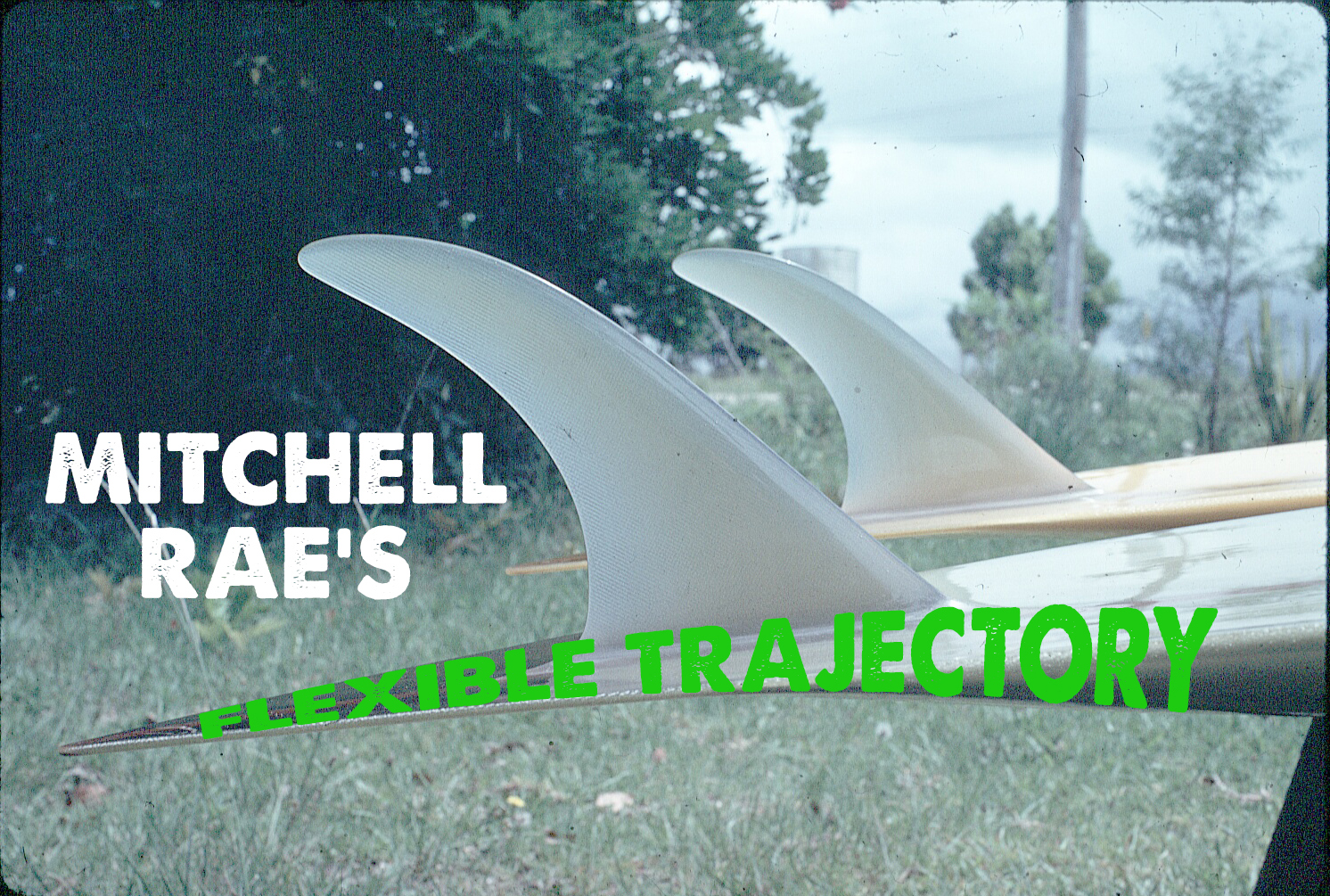
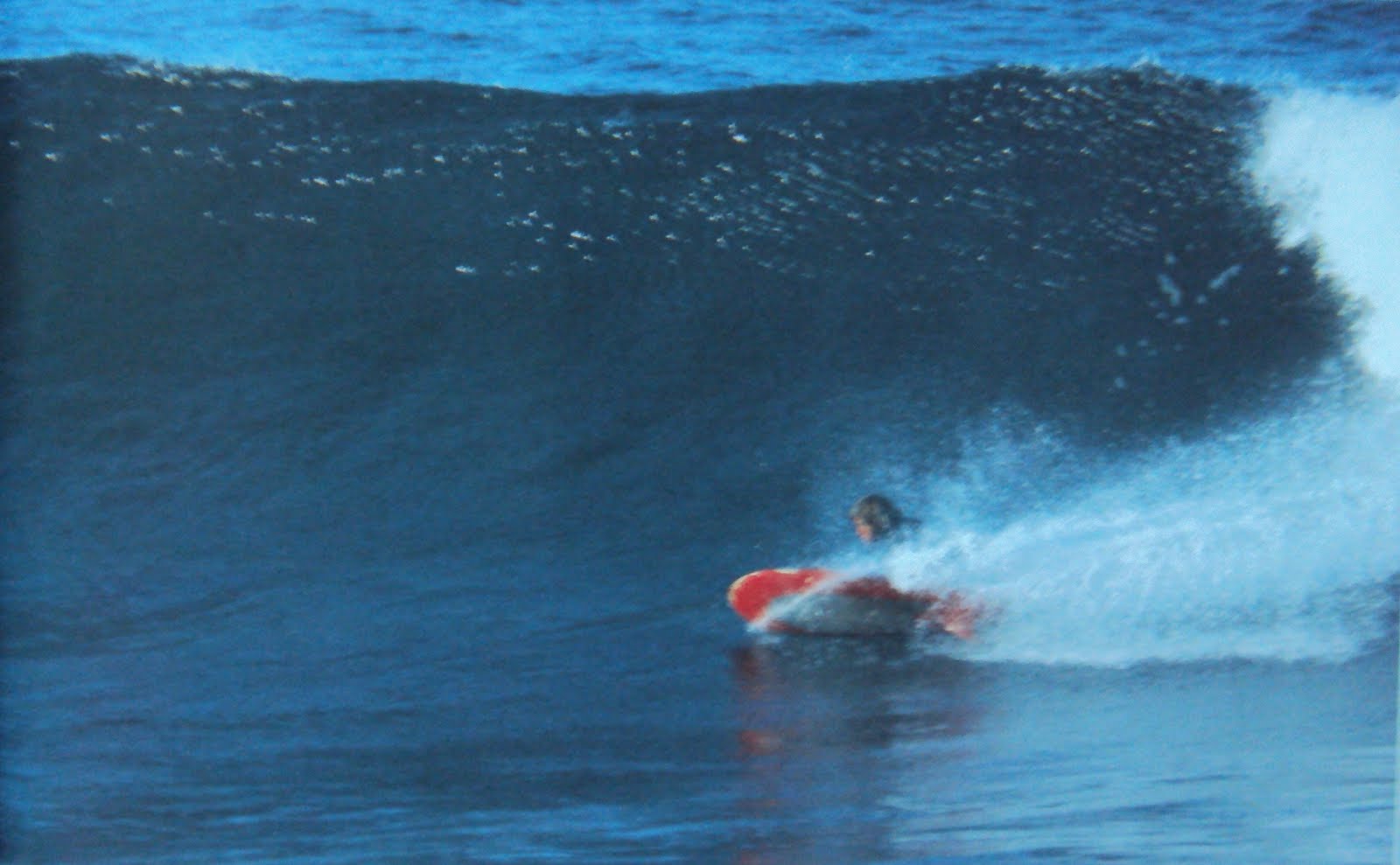
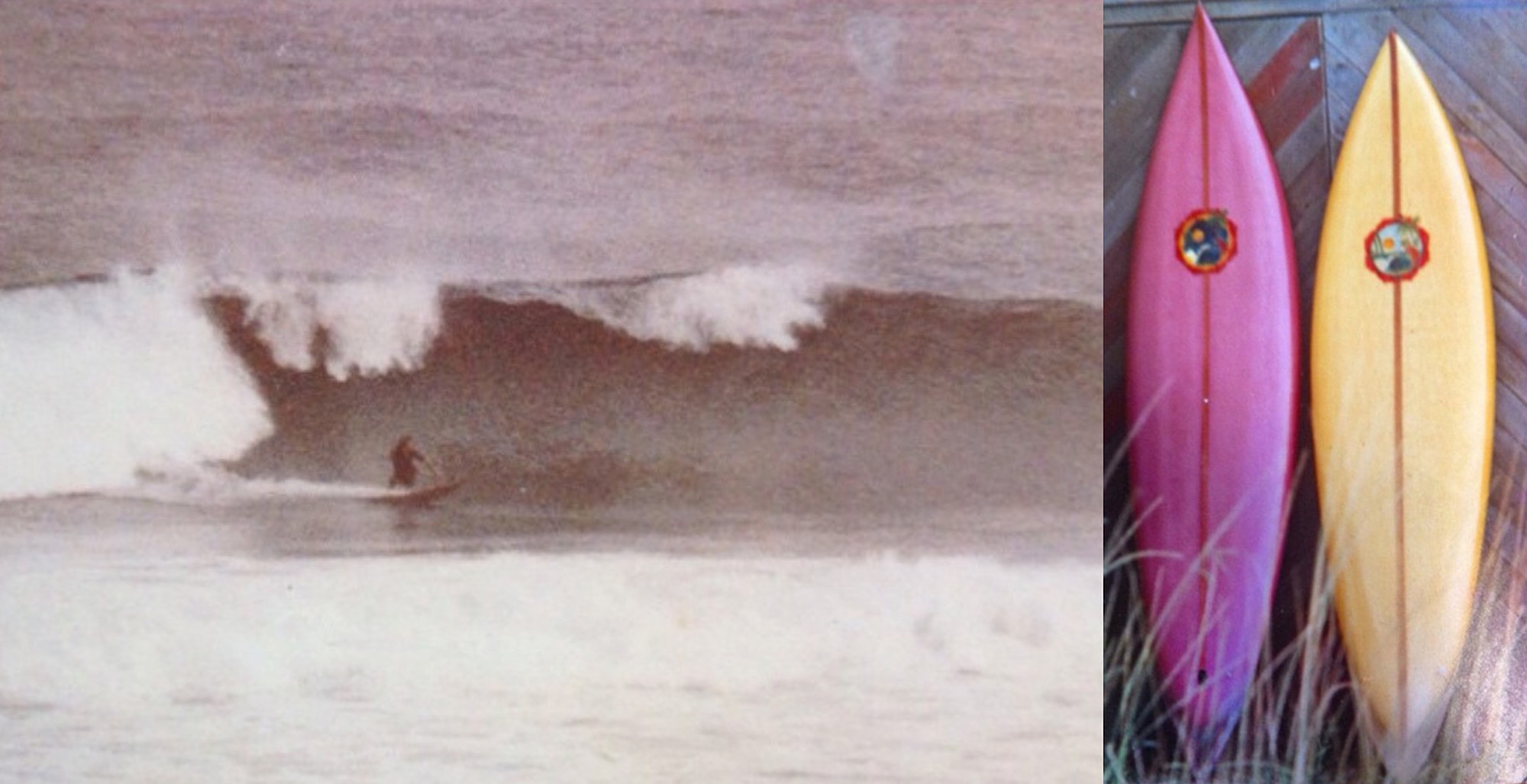
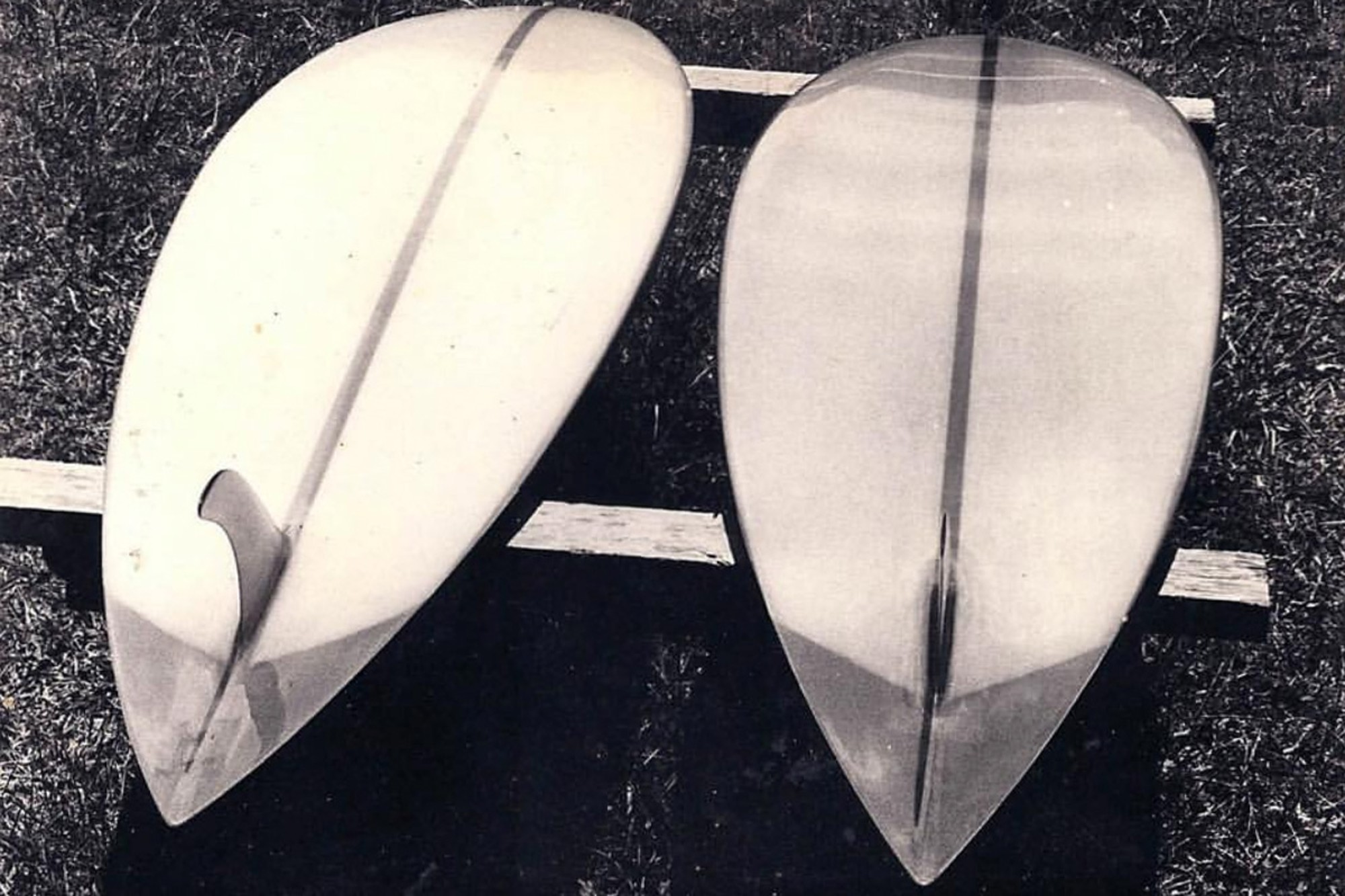
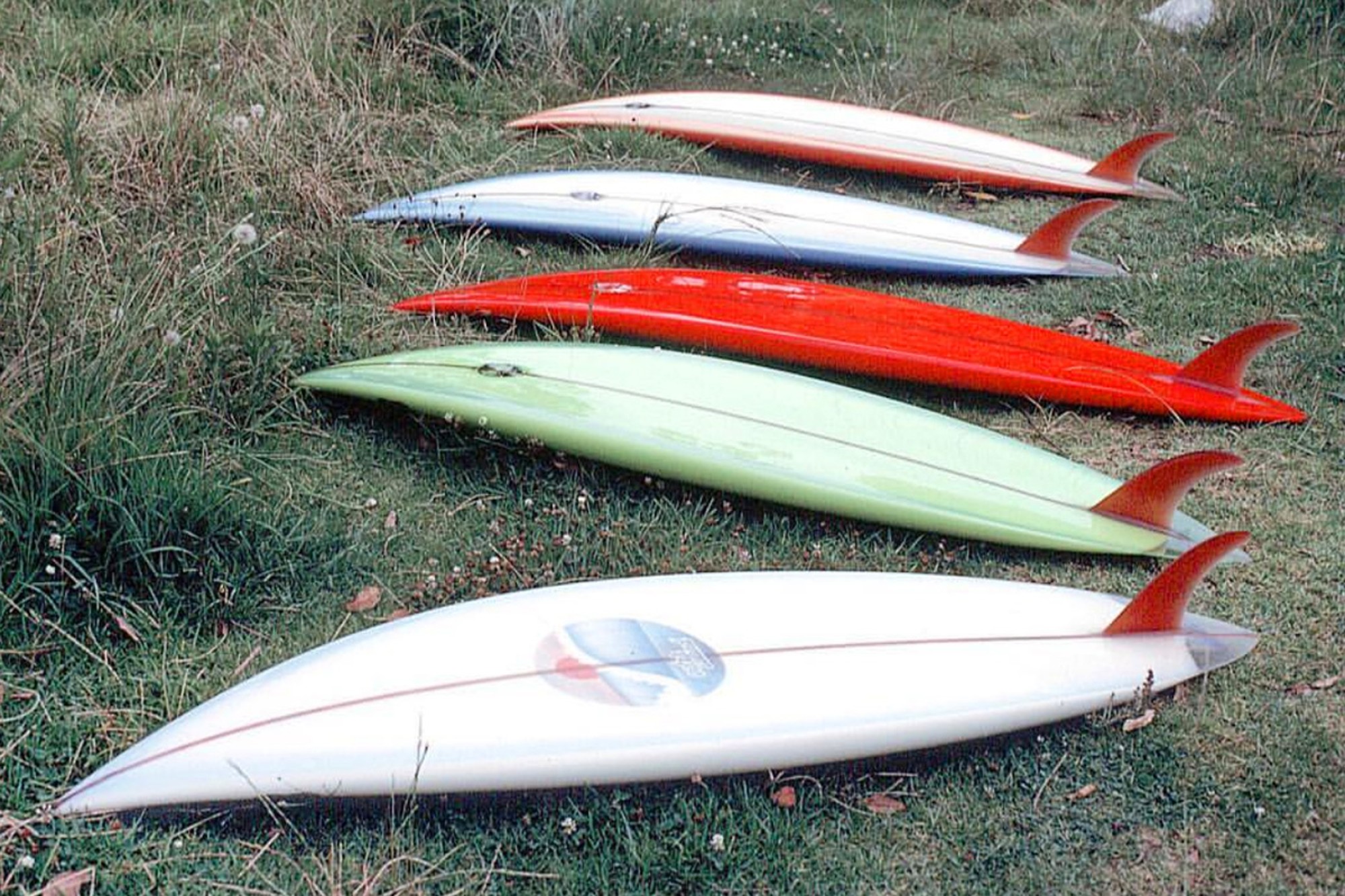
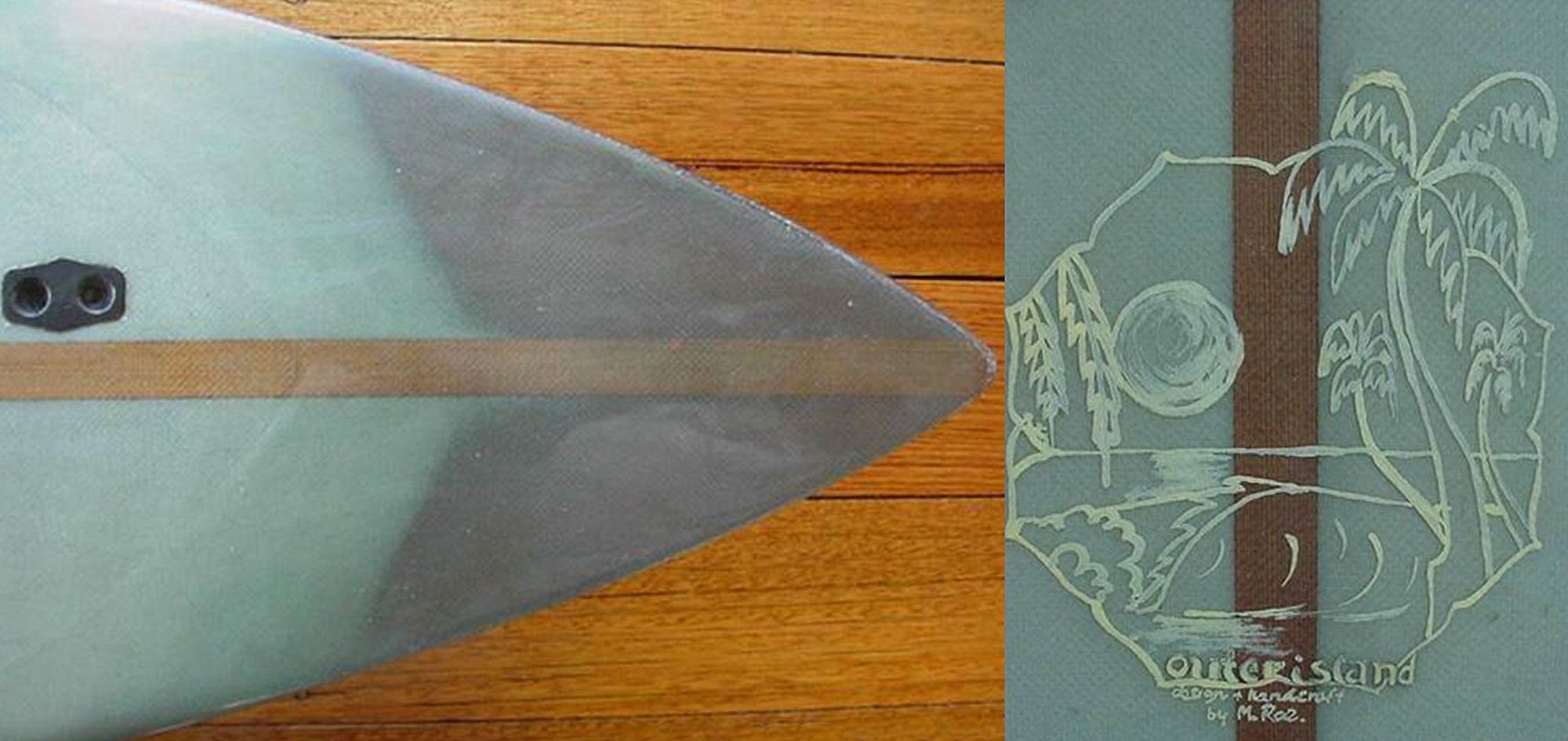
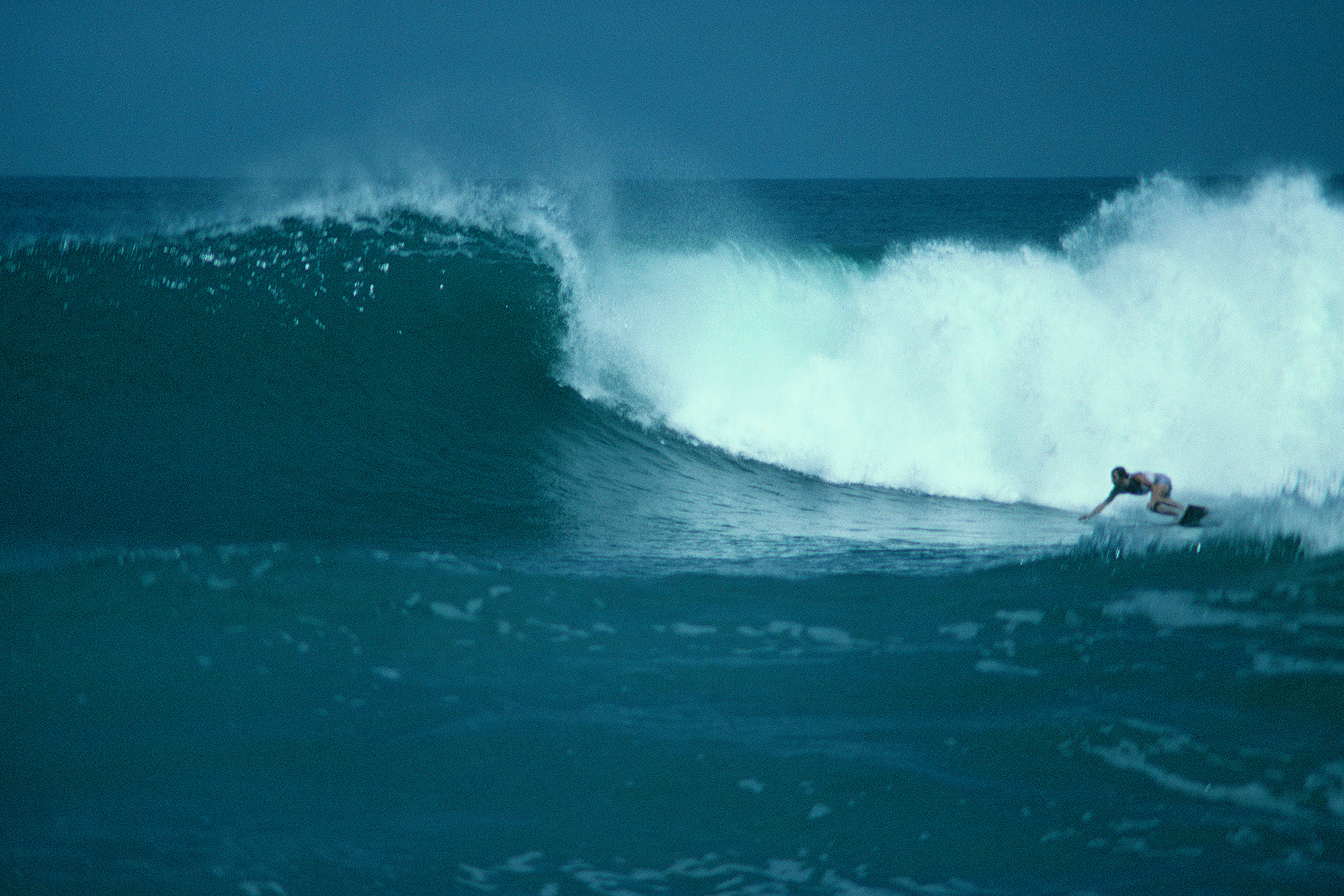
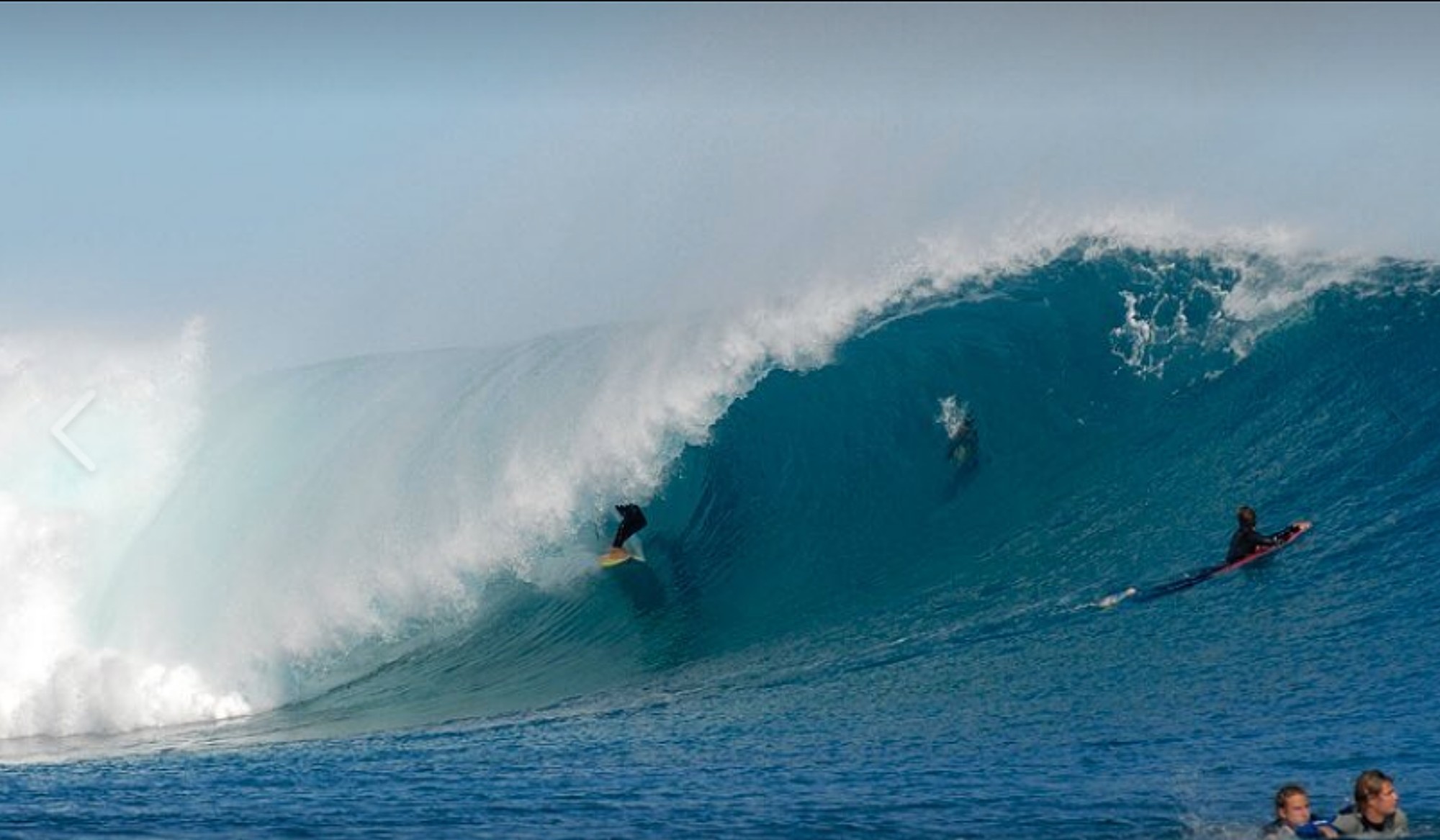

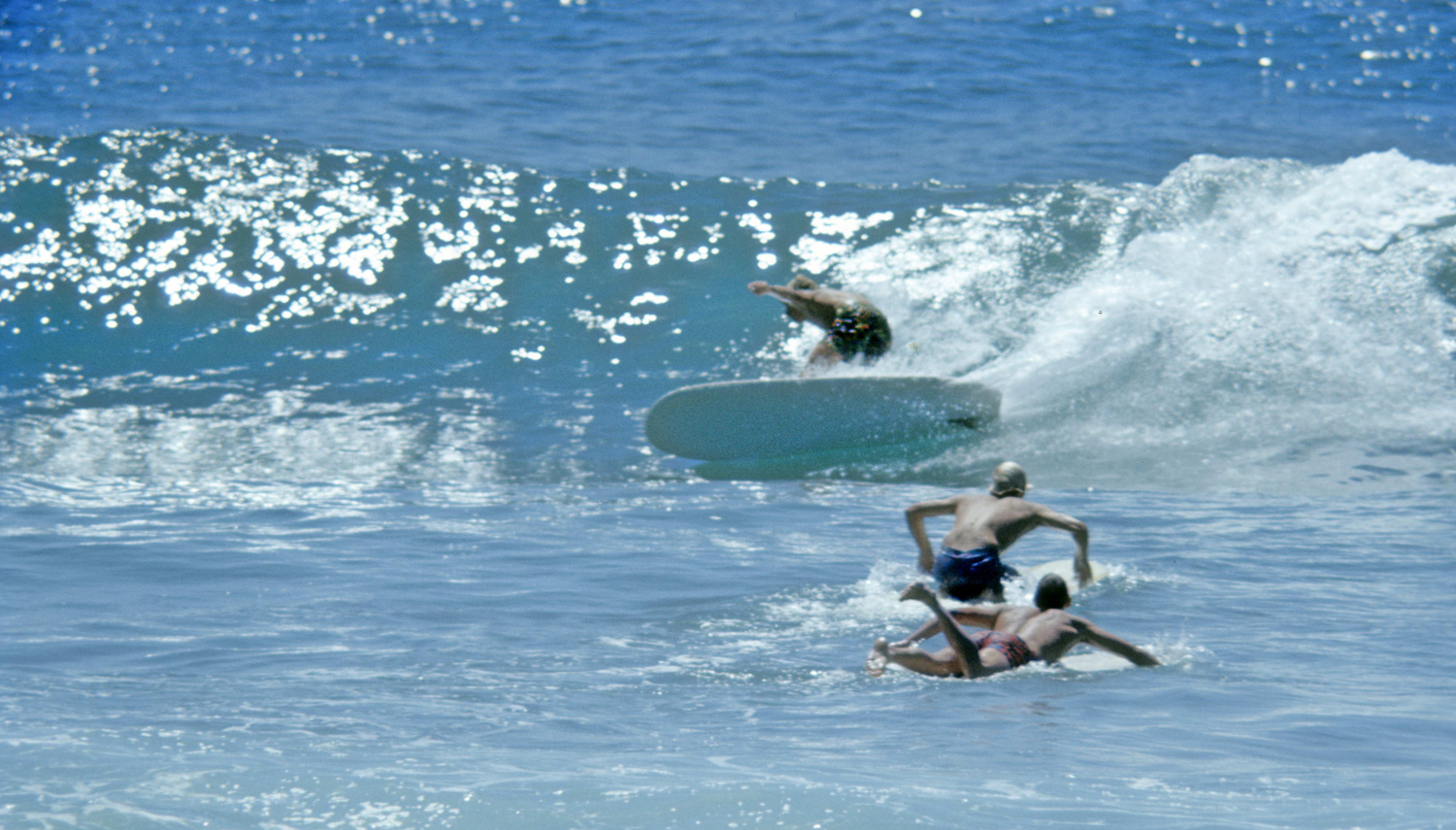
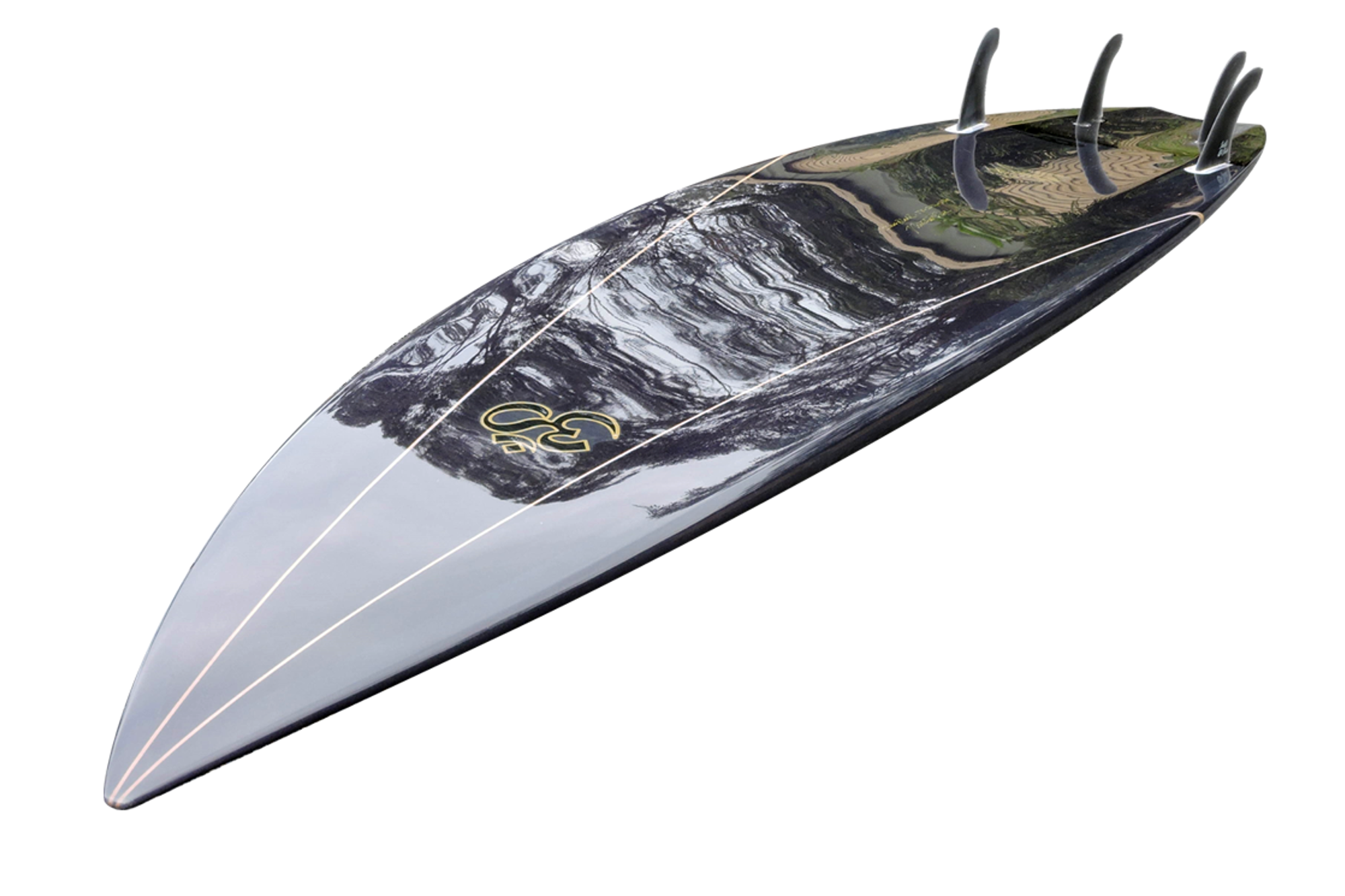

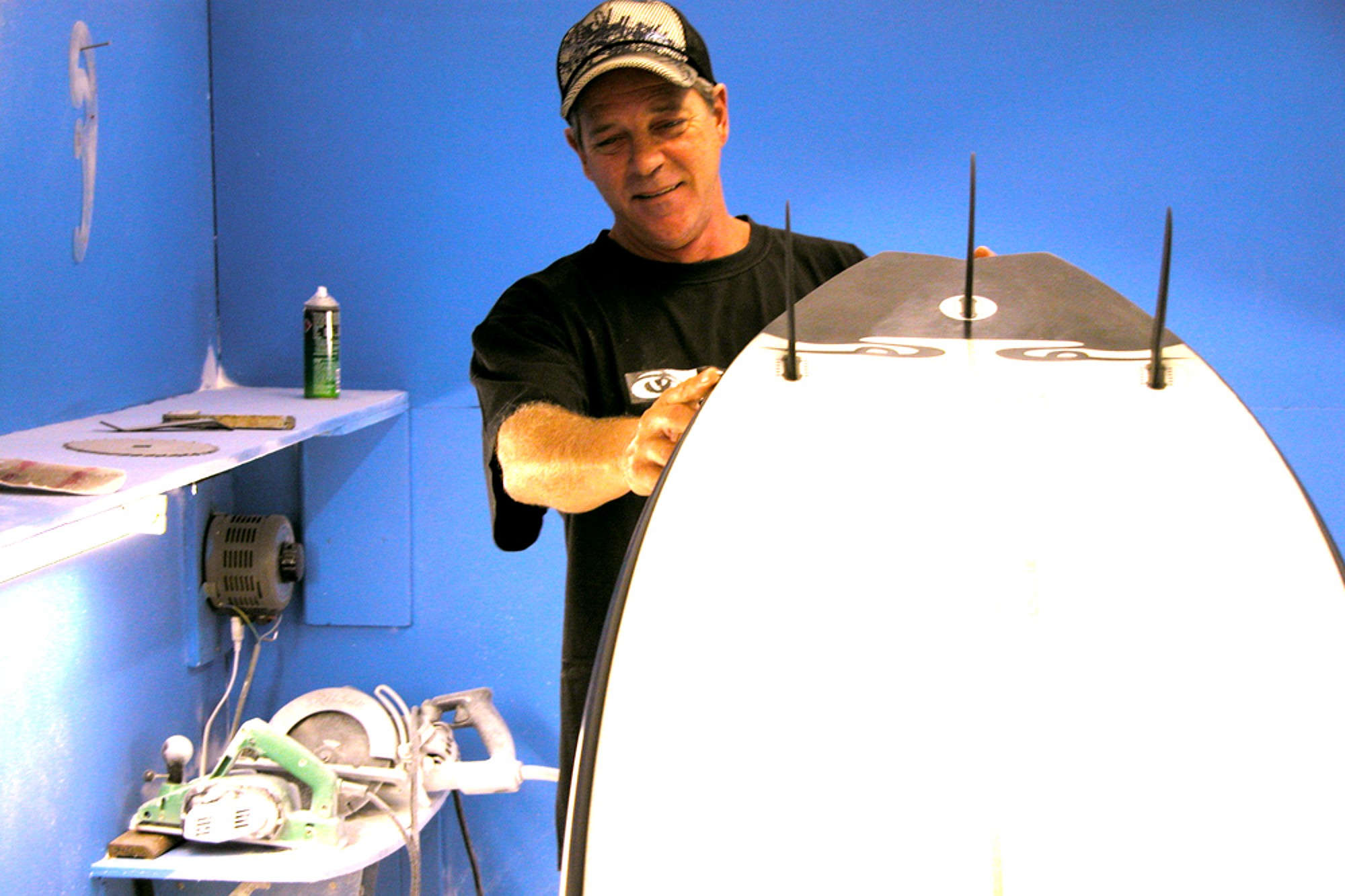
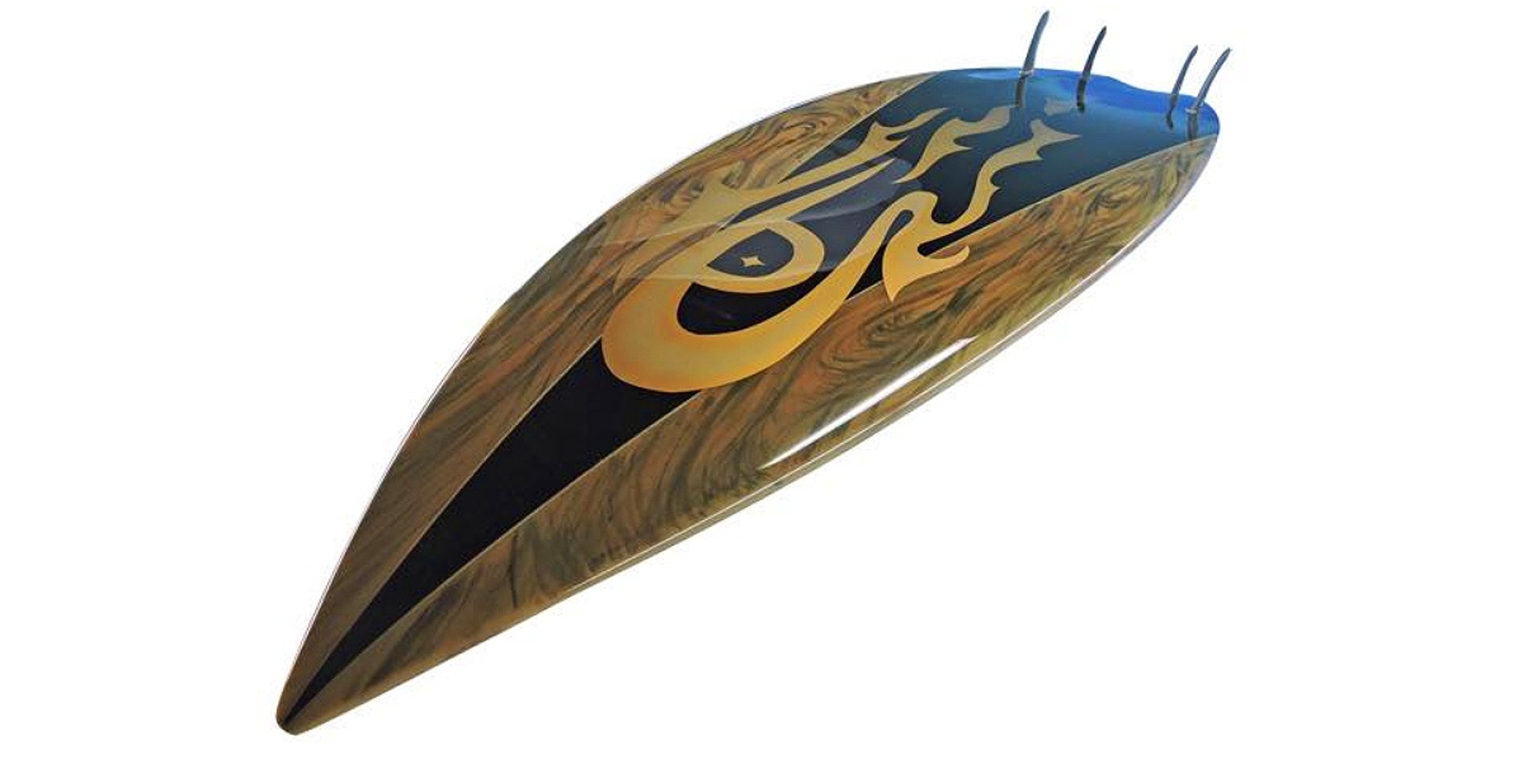
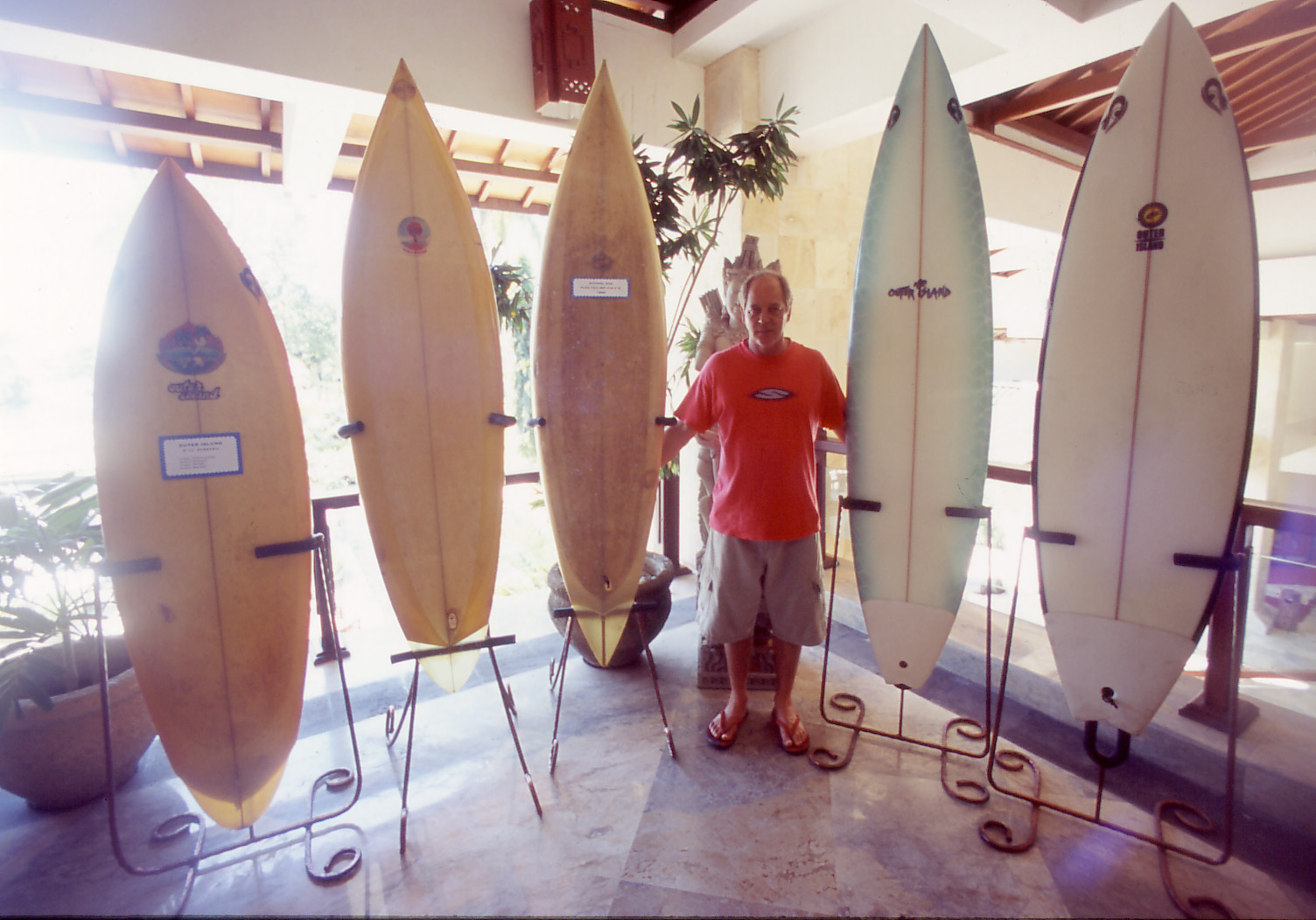
Comments
Good work Mitchell I've always admired your boards.
A photo that didn't make the cut but perhaps should've. Three Outer Island flex tails and a cat:
Also, check the stringer on the board at left, a reverse of Mitchell's later V stringer.
Great article! Had a six six that was an outer islands. No flex tail, amazing board. Went great and had a cool spray. Highly recommend!
Very interesting. Always good to hear about someone who has followed their own path. Mitchell was known as a very talented surfer from an early age. Our circles over-lapped though I don't remember actually meeting him. I had a few great boards from Glynn Ritchie when he was at Peter Clarke's in Brookvale and suspect that Mitchell was there at that time learning the trade.
"But lesser known is that with flex boards, especially those with controlled flex running down the board, you also get a variable curve. The rocker curve bends, it gives you a variable curve so you can carve a different line. You can carve a tighter arc in the turn."
I was so glad to see Mitchell mention that.
George always told me that the chief benefit of the flex in his boards was variable rocker curve.
Great to see a shaper who's persisted with an unusual design feature over a long period of time. Thanks for sharing.
What a great read. Thanks Mitchell, and thanks Stu. My buddies and I first stumbled onto the whole flex thing in the late 90’s but we were making boards for kite surfing. We were destroying our knees on kiteboards and made a few “springy ones” to make it easier on our knees. That lead us down the path of discovery. Uncontrolled flex, controlled flex, reflex, carbon rails etc etc (all that stuff Mitchell had been refining for years). Had we known of Mitchell we probably would have saved a fortune, but missed out on the fun journey. Eventually life got in the way and we could buy basically what we were making, so we stopped.
Fast forward to me entering my mid fifties and wanting (or perhaps needing) surfboards with a bit more buoyancy (but not bigger). As good as those higher volume surfboards are to paddle, catch waves and get moving on, the one thing I notice on a lot of them is their stiffness. Or more correctly their lack of flex and reflex. It’s one of those things that you don’t notice until it’s gone and I’m only talking about small wave boards (not grovellers) that are 33 litres instead of 27 litres. As soon as you beef it up they get stiffer and just don’t seem to perform as well. Hopefully Mitchell and other aging good shapers will keep refining their designs to help those of us who aren’t quite ready to admit were too old.
Morg, I was fortunate to get onto Mitchels's craft a long, long time ago, and quickly came to know that nothing rides like an Outer. I'm no smart guy when it comes to the intracacies of board design or the physics of materials or mother nature. When I first saw OI boards in action in the water, they went places and did things on the wave that were beyond my visual and cognitive comprehension. Even from a distance, I could tell if (an unknown) surfer was riding an OI by the way the board behaved and functioned on a wave.
It is absolutely true what Mitchell says about flex boards, they're like getting on a magic carpet. You'll never get off one after that.
Riding a wave on one silently speaks to the soul of this old surfer; and that's been my long-held experience and my purest joy.
Never admit it morg
Never too old
Bucket list board for me. One day.
Great read. Thanks
Here's an interesting fact: the 'Wilderness' flex board Mitchell mentions above is in Morning Of The Earth!
In 2010 I interviewed Chris Brock about some boards he was making, here's an excerpt:
"George Greenough's surfing equipment was so far out, like nothing anyone on the planet had seen, and it took a few years for people to get their head around trying to ride boards that small standing up. His ability to turn and trim from the one point was my inspiration to try and head in that direction. Along with Ted Spencer and Gary and Terry Keyes we started making boards like that at 'Wilderness', Angourie.
"I made my first flex board - which I am riding in Morning of the Earth - and the back third of the board was flexible. It was a big job to construct. I then thought I need to be able to make a hard board that fits the waves contours like the flex tail."
Would love to try one. The idea for larger type surf just seems to make perfect sense. Does the flex mean less breakages?. That would also seem to make sense????. I've had a shitload of boards over the years and the lightweight 4 once glass jobs seem to last longer compared to a heavier glass job as far as snapping them is concerned. In my mind its due to flex compared to rigidness?.
Elliedog,
Maybe be too many variables to blame it on the actual fabric i.e. 6 ounce Vs 4 ounce. It opens up the pandora's box of ...
Fabric weave, manufacturer, foam type, foam mix, stringer lay , stringer material, temperature when glassing, sander, storage of board, resins type.
modulus of elasticity............
Elliedog there is different composites cloths that could blow your mind! The biggest challenge is the get it accepted by 1st the shaper and then the customer!
Shaper - usually says "that's more work" and "that costs more, than my normal imported cheap fibreglass"
Customer - usually says "which pro is riding it?" or "it doesn't look the same as everyone else" or "why is going to cost more"
So the mainstream stays using the same products or whatever is the flavour of the month.
This is why people like Mitch Rae going on their own path are so admired and have done amazing things for surfboard industry.
Not sure how i missed this, good article, love the look of his boards and ideas, true works of art, always been disappointed he hasn't experimented more with EPS/epoxy composite builds.
As a wise man once said, "if it was easy to do everybody would be doing it".
Mitchell chose his path a long time ago, not the easiest one to tread, but it was honest and he put his heart and soul into it. No-one can ever say Mitchell Rae took short cuts or followed someone else's tracks.
Its been a pleasure to watch him hone his craft all these years and may there be many more to come.
DT
Great article!
I have a Livewire TJ Pro mal and it flexes quite a bit. It's great flexing of a hard bottom turn to get that "whip" up the wave face. The only issue is that on any wave over 6ft, it will "unflex" on the way up off the bottom. Everything that flexes, at some stage, wants to straighten out again.
Don't know if this is considered "uncontrolled" or "controlled" flex pattern in the board.
Great article . Beautifully crafted and finished boards . I've tried a few of outer island flex tails . Noticed how important it was to get the flex right in relation to your back foot weight ratio . For those interested and inspired buy the article . There's others out there playing around with this concept too . I've been inspired by riding Jed done's flex design . It's a good idea, being flexible.
Great article . Beautifully crafted and finished boards . I've tried a few of outer island flex tails . Noticed how important it was to get the flex right in relation to your back foot weight ratio . For those interested and inspired buy the article . There's others out there playing around with this concept too . I've been inspired by riding Jed done's flex design . It's a good idea, being flexible.
Great insight from a master craftsman. I had been hunting a second hand outer islands V2 for a long time. Not surprisingly they don't get moved on very often by their owners, but anyway I got one not long ago in my shortboard dimensions a 6'3". First surf was in shifty pitching back hand wave and I didn't feel anything out of the normal from the board as was to be expected. Last Thursday was the day, 3-4 ft glass on my forehand. Wow. By the 3rd wave this board was slingshotting me off the bottom like a nothing I had ever ridden before. On a normal poly shortboard I would delay a bottom turn then pump of the bottom to get to where I needed to be, but on this board no push or pump of the bottom was needed. It has sooo much acceleration. My brain was to slow to keep up with where the board was sending me. I was smiling and giggling just in awe. Lots of soul arches and hooting. I didn't get to do any cutbacks as the waves where quick down the line type of waves but I cant wait for that surf. In clean good overhead waves im hooked. Flex is fun.
I've got a brand new v2 I'd Sell you for half price , $500.
5'10" x 19 . Maybe 30 litre . It's the fish model .
Mitchell has been delving into his back catalogue by recreating a circa-78 'Persian slipper' with flextail, everything about it faithful to the orginals, including the hand drawn logos...
Joel Fitz surfing one of Mitchell's Persian slipper flex tails at the recent Uluwatu Single Fin comp.
Mitchell surfed the same board at the 1980 Om Bali Pro.
Mitchell Rae, 50 years in the game. From Instagram:
Well, it occurs to me that it was around this time of year, 50 years ago, that Outer Island Surfboards came to life - registered in 1969.
My older partners Glynn Ritchie and David Chidgey brought a wealth of surf and life experience to the table. I was the blonde haired young grom, full of surf stoke, hungry to shape better boards to ride real waves. At that point, I had done a year or so at Peter Clarke’s in Brookvale, and graduated from sander to shaper. I was still glasser, sander, glue up kid (stringers), fin foiler, and general dogs body...
Our first location was the over-sized triple garage at the house where iconic surf rock band Taman Shud lived, high on the hill at Newport overlooking the Royal Prince Alfred Yacht Club. Heady days indeed.
Then Midget moved out of Gonzales Boatshed at Palm Beach, moving to the commercial epicentre of boardmaking, Brookvale. We swiftly moved into that hallowed space... it was a changing of the guard, so to speak...
Glynn and myself rented a beach front fisherman’s shack over at Mackeral from Laurey Short. We built a 13 foot boat from a mold we hired from Kerry Barry Cotter, a miniature ski boat hull, clinker straked. It was the best little boat, all the old hands used to borrow it. It was maroon and was christened ‘the Red Herring’. It was an amazing period of time; we surfed the Box on every swell, often seriously pumping for days with few or no one around. Wonderful days at the Wedge. Ted Spencer joined us for a while, and we did a lot of surfing together, he's still one of my all time favourite surfers.
They were golden days, surfing with the likes of Midget, Nat, McTavish, all the good surfers were there for the good days at the Wedge and big Nth Avalon.
Then, in ‘72, we went to Bali, not long after Alby and the world was never the same again.
Anyway, many tales to be told, maybe I’ll write some more of them up sometime.
All those years ago,1969.
Several Outers on Gumtree, full flex tails at very reasonable prices (I thought). Jagged one myself.
e.g.
https://www.gumtree.com.au/s-ad/nambucca-heads/surfing/outer-island-flex...
I've found custom board to be a bit hit and miss. But my 7'0 Mitchell Rae coral reefer V stringer is a standout in my quiver.
It's my go to for most days in Indo and reef breaks at home. Its reassuring on the drop but also surprisingly responsive.
I finally relented and ordered some switchblade fins (FCS 2 now offers something very similar looking) and like the man said, it makes the board come alive.
I'm cynical by nature, but agree the board does resonate, and I can't recall having a bad surf on it.
There is also something about having a hand made work of art under your arm. It's well constructed and many years down the track, it'll be the board that gets hung on the wall...
I read your email Stu, I too had a blood red Zen Blade sitting on the rack for 2 years waiting for a trip for Indo. I know your feels mate!
Mines an 8’3”, I got her to surf Outside Corner or T-Land reckon thought the extra length plus the flextail will be a solid combo, can’t wait to see what she can do! (Hopefully I will prove worth lol!)
Yeah great article. I’ve been thinking individual shapers should rate their boards like ski manufacturers rate their skis. They too have an issue with conformity of standards but it would be easy enough for a good surfer to take out three identical shapes with the only difference being stringerless, standard and carbon stringered and they can tell us whether it is the equivalent of a soft, medium or stiff ski… and measure the flex tip to tail and maybe also in the back 1/3 of the board … and maybe some torsional measurements, so we have some baselines to work off… just like skis and fins. It will of course be different for different weighted guys as well as different waves but at least we will have a better idea of the factors that help to produce the magic board
In fact now that I’ve said all this I’ll have to go home and measure the flex in all my boards good and bad and see if there’s a difference
Great article and good to see Mitchell getting more recognition. His boards have a very loyal band of followers wherever I have surfed. What would it take to get Ted back in the water!